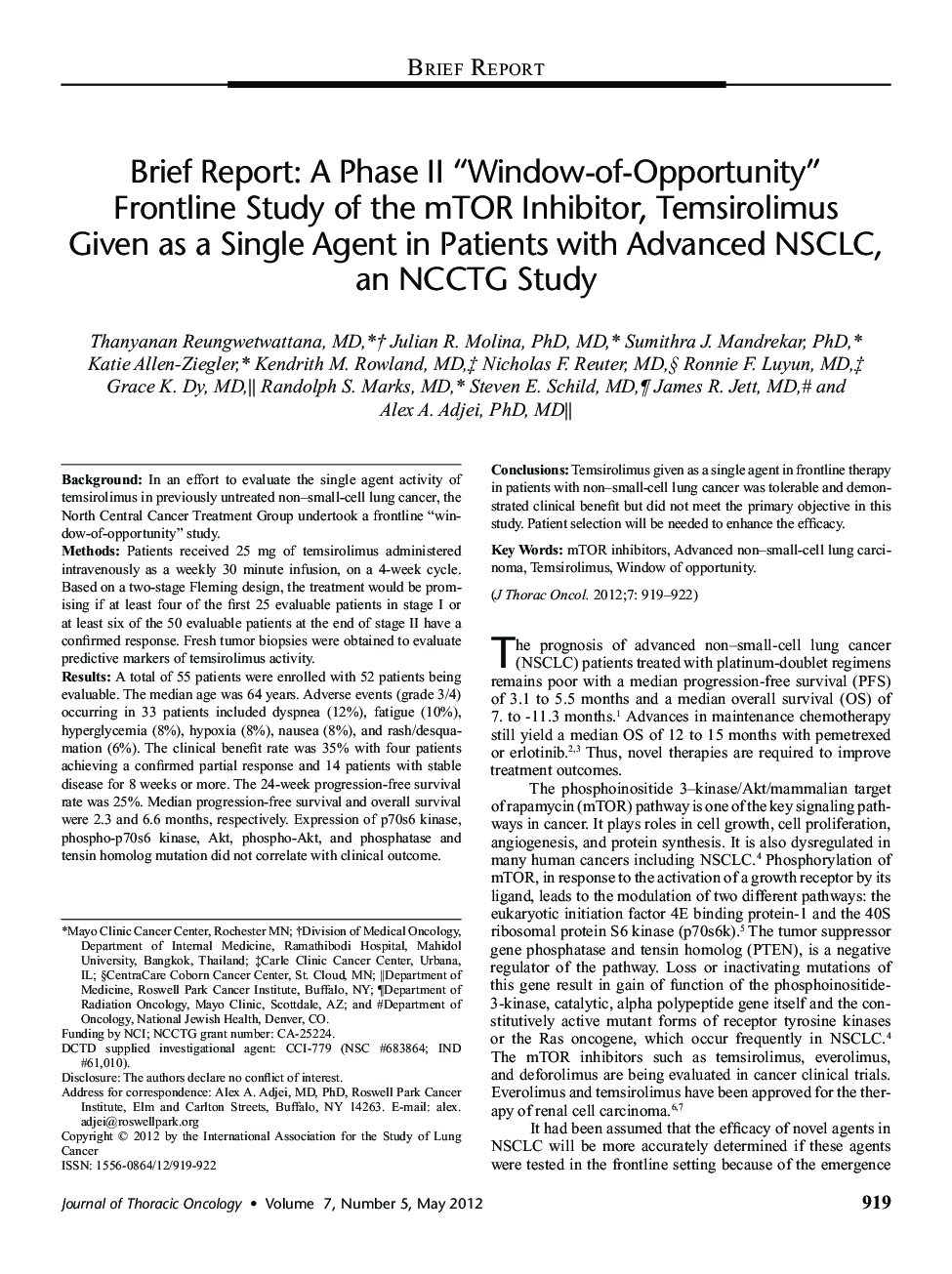| Article ID | Journal | Published Year | Pages | File Type |
|---|---|---|---|---|
| 3990568 | Journal of Thoracic Oncology | 2012 | 4 Pages |
Background:In an effort to evaluate the single agent activity of temsirolimus in previously untreated non–small-cell lung cancer, the North Central Cancer Treatment Group undertook a frontline “window-of-opportunity” study.Methods:Patients received 25 mg of temsirolimus administered intravenously as a weekly 30 minute infusion, on a 4-week cycle. Based on a two-stage Fleming design, the treatment would be promising if at least four of the first 25 evaluable patients in stage I or at least six of the 50 evaluable patients at the end of stage II have a confirmed response. Fresh tumor biopsies were obtained to evaluate predictive markers of temsirolimus activity.Results:A total of 55 patients were enrolled with 52 patients being evaluable. The median age was 64 years. Adverse events (grade 3/4) occurring in 33 patients included dyspnea (12%), fatigue (10%), hyperglycemia (8%), hypoxia (8%), nausea (8%), and rash/desquamation (6%). The clinical benefit rate was 35% with four patients achieving a confirmed partial response and 14 patients with stable disease for 8 weeks or more. The 24-week progression-free survival rate was 25%. Median progression-free survival and overall survival were 2.3 and 6.6 months, respectively. Expression of p70s6 kinase, phospho-p70s6 kinase, Akt, phospho-Akt, and phosphatase and tensin homolog mutation did not correlate with clinical outcome.Conclusions:Temsirolimus given as a single agent in frontline therapy in patients with non–small-cell lung cancer was tolerable and demonstrated clinical benefit but did not meet the primary objective in this study. Patient selection will be needed to enhance the efficacy.
